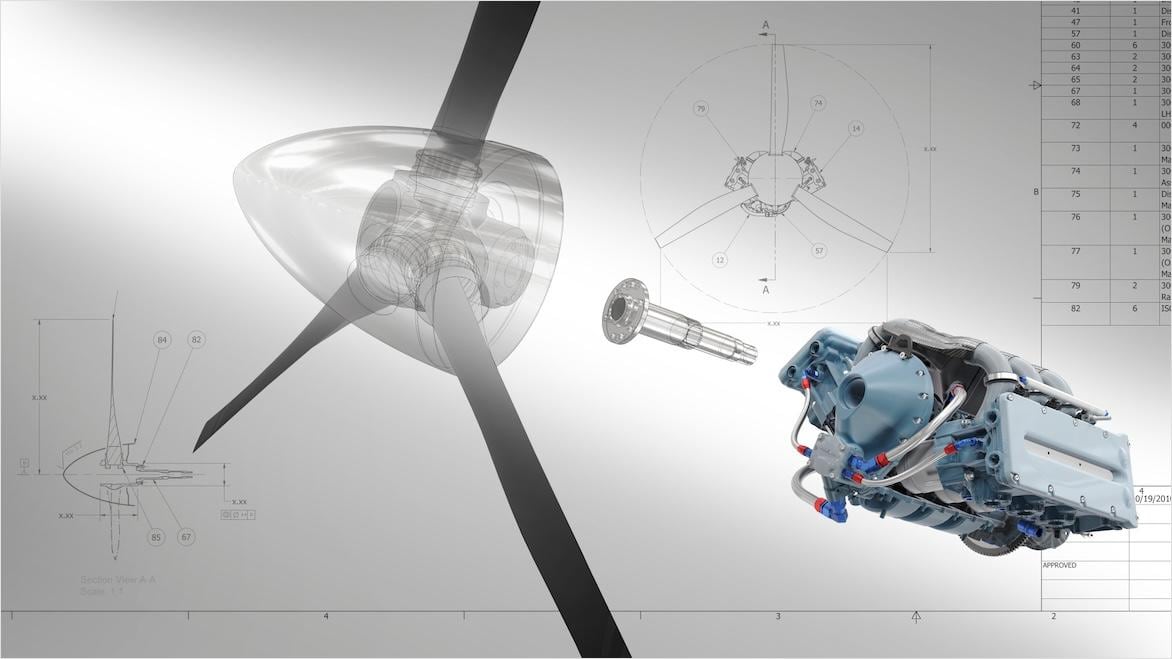& Construction

Integrated BIM tools, including Revit, AutoCAD, and Civil 3D
& Manufacturing

Professional CAD/CAM tools built on Inventor and AutoCAD
Image courtesy of ADEPT Airmotive (Pty) Ltd.
The DWG™ format is a leading industry standard for CAD data exchange among drafters, architects, and engineers. DWG files can be created and edited in many Autodesk software tools, including AutoCAD, which uses .dwg as the native file format. The DWG technology environment contains more than just the capability to draw, render, annotate, and measure 2D and 3D geometry; it can also be used to interact with and store maps, photos, BIM, point cloud data, and more.
Developed by Autodesk, TrustedDWG® technology is the original, efficient, and accurate way for storing design data using DWG files. TrustedDWG functionality can verify whether drawing files were last saved by an application other than one released by Autodesk or based on RealDWG. In Autodesk software like AutoCAD and AutoCAD LT, the system can alert users to files that Autodesk may not be able to support or guarantee the integrity or compatibility of a .dwg file within the application.
You can work with DWG files using many Autodesk software tools including AutoCAD, Revit and Inventor. As DWG has been adopted as a commonly used file format for design industries, Autodesk licenses the RealDWG® software development toolkit, which enables the creation of DWG and DXF™ files that meet the standards set by Autodesk and the TrustedDWG® verification system.
Leverage DWG file viewers like the Autodesk Viewer, DWG TrueView, and AutoCAD Web to view DWG files without having AutoCAD installed. Great for quick client reviews and collaboration between teams.
With AutoCAD Web, view and edit DWG files anywhere, from any device. Make quick changes to DWG files and access more features in the full version with an AutoCAD web trial.
Convert DWG files to new formats in as few as four steps using Autodesk DWG TrueView. Available for Windows, convert DWG files to JPG, PNG, STL, DXF, and CSDX file types.
Products written in C++ or NET get the competitive edge with DWG file read/write capability from the source. Confidently deliver products with full compatibility back to AutoCAD Release 14.
DWG files made using Autodesk software or based on RealDWG can be opened and viewed with a subscription to Autodesk software, including AutoCAD, AutoCAD LT, AutoCAD Web, Revit, and Inventor. Alternatively, you can use our viewing software, including Autodesk Viewer online, or DWG TrueView on Windows.
AutoCAD Web allows you to use AutoCAD in a web browser or mobile device to edit, review and create DWG CAD files.
While DWG and DXF are both file formats for CAD software, DWG is Autodesk’s proprietary format invented in 1982, and DXF is an open file format standard. Both file formats have similar functionality for storing 2D and 3D images, but DWG can store a wider array of files. Also, DWG’s binary code results in file sizes around 25% smaller than DXF files, which used text-based coding. Many designers use DWG when working, and then export to DXF to share their designs.
The most commonly used programs to edit .dwg files are Autodesk AutoCAD, AutoCAD LT, AutoCAD Web, Inventor, and Revit. There are also some non-Autodesk programs that can edit .DWG files.
You can edit DWG files online using AutoCAD Web. AutoCAD Web allows you to use AutoCAD in a web browser or mobile device to edit, review and create DWG CAD files.
Autodesk provides a set of freeware products to view CAD files (DXF, DWG, DWT, DXB, DGN, DWF) offline, on mobile, or directly in your web browser.
For stakeholders who only need file-viewing access, we offer free viewers without a subscription. If you're transitioning to a named user, be sure to take advantage of the trade-in offers available to you.
The DWG technology environment contains the capability to mold, render, draw, annotate, and measure. While commonly associated with AutoCAD, DWG technology is an integral part of many of our CAD products.
TrustedDWG™ technology lets you know of potential incompatibility when a file was not last saved by an Autodesk software, and identifies files that might not be supported by Autodesk software.


